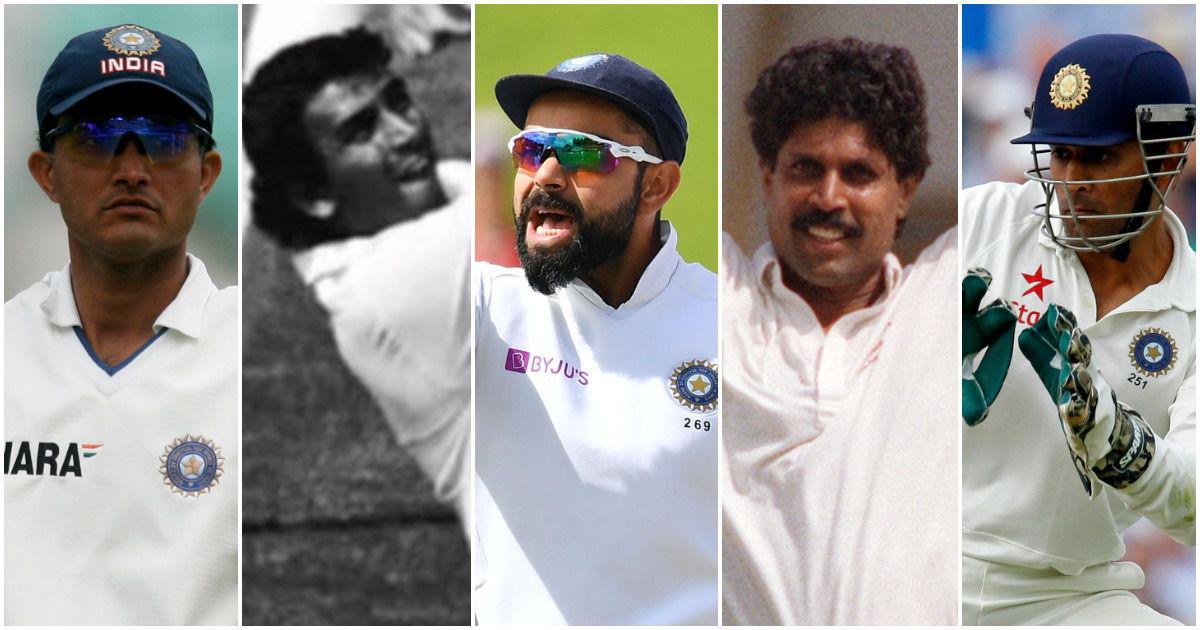‘Not up for it’: Pressure grows on Indian skipper – “Not up for it”: Pressure grows on Indian skipper – that’s the harsh reality facing the leader of the Indian cricket team. Recent poor performances have fueled intense scrutiny from fans, media, and even within the team itself. This article dives into the mounting pressure, exploring its sources, potential consequences, and possible solutions to help the skipper navigate this challenging period.
We’ll examine the criticisms leveled against his leadership, the impact of media coverage, and how this compares to the pressures faced by previous Indian captains. We’ll also look at strategies for managing pressure, the importance of mental health support, and the role of the cricket board in providing necessary support.
So, the Indian cricket captain’s facing a ton of pressure – it’s “not up for it” territory, right? It makes you think about other high-pressure situations, like maybe the engagement announcement of Sean Hannity is engaged to Ainsley Earhardt of ‘Fox & Friends’ , which probably comes with its own set of intense media scrutiny. Anyway, back to the cricket – the captain needs to stay focused to handle this intense pressure.
The Pressure Cooker: Examining the Strain on the Indian Cricket Captain
The Indian cricket captaincy is a high-pressure role, demanding consistent performance and strategic brilliance. Recently, however, the weight of expectation seems to have intensified, leading to a growing narrative questioning the skipper’s ability. This article delves into the various sources of this pressure, its potential consequences, and possible solutions.
The Current Pressure on the Indian Skipper

Recent performances, particularly a series of losses in crucial matches, have fueled the “Not up for it” sentiment surrounding the Indian skipper. Criticism focuses on questionable tactical decisions, a perceived lack of on-field aggression, and inconsistent team selection. The relentless media scrutiny and intense public opinion have further amplified this pressure, potentially impacting the captain’s mental well-being. Comparing this to previous captains reveals a similar pattern of intense pressure, but the 24/7 news cycle and social media’s pervasive nature have magnified the impact considerably.
Previous captains faced similar challenges, but the scale and intensity of public scrutiny in the current digital age is unprecedented.
Analyzing the Sources of Pressure, ‘Not up for it’: Pressure grows on Indian skipper
Multiple stakeholders contribute to the pressure on the Indian skipper. Fans expect consistent victories, the media demands compelling narratives, team members look for clear direction, and the cricket board assesses performance against pre-set targets. The role inherently carries immense responsibility; the captain’s decisions impact the team’s morale, performance, and ultimately, the nation’s pride. Internal team dynamics, including player conflicts or lack of cohesion, can further exacerbate the captain’s burden, impacting their performance and overall morale.
So, the Indian skipper’s feeling the heat, right? “Not up for it” headlines are everywhere. It’s a tough gig, leading a team like that, but sometimes seeing a rising star like Nitish Kumar Reddy really helps put things in perspective. Check out his amazing all-rounder performance at the MCG – The Nitish Kumar Reddy story: As allrounder shines at MCG, here’s – it’s inspiring to see that kind of talent.
Maybe that positive energy can help ease the pressure on the Indian captain.
| Format | Specific Pressure | Source of Pressure | Impact on Performance |
|---|---|---|---|
| Test Matches | Maintaining consistent performance over long periods, strategic planning for five-day matches | Fans, media, team expectations, board | Potential for fatigue, poor decision-making under pressure |
| ODIs | Adapting to different conditions, managing limited overs effectively | Media, fan expectations, competitive international environment | Inconsistency in performance, increased risk-taking |
| T20s | Maintaining high run rates, strategic bowling changes, handling pressure situations | Fans, media, fast-paced nature of the game | Erratic decision-making, potential for high-pressure collapses |
Potential Impacts and Consequences

The intense pressure can lead to both short-term and long-term consequences. Short-term effects include poor on-field decision-making, decreased batting or bowling performance, and visible signs of stress. Long-term impacts might include burnout, mental health issues, and even a premature end to the captain’s career. Team morale suffers when the captain struggles, leading to a ripple effect affecting overall team performance.
Effective pressure management techniques, including mindfulness, meditation, and seeking professional support, are crucial for the skipper’s well-being and the team’s success.
A visual representation of the cascading effects of pressure could be a diagram showing the captain at the center, with arrows radiating outwards. These arrows represent the pressure flowing towards player performance (decreasing), fan confidence (decreasing), and media scrutiny (increasing). The decreasing player performance then feeds back into increased media scrutiny and further decreased fan confidence, creating a negative feedback loop.
Historical Context and Comparisons

The current pressure on the Indian skipper echoes similar challenges faced by past captains. Analyzing how previous leaders navigated these pressures provides valuable insights. A timeline detailing key events—significant wins and losses, media controversies, and changes in team dynamics—can illustrate the evolution of pressure over time. The media’s portrayal of captains has shifted; the 24/7 news cycle and social media amplify both praise and criticism, creating a more intense and potentially damaging environment.
Future Outlook and Potential Solutions
Mitigating the pressure requires a multi-pronged approach. The cricket board should implement strategies to support the captain, fostering a positive team environment and improving communication. Improved media management and proactive engagement with public perception can help shape a more constructive narrative. Prioritizing mental health support for cricketers facing immense pressure is crucial for their long-term well-being and career sustainability.
Open communication channels within the team, coupled with robust mental health resources, are key to navigating the demanding world of professional cricket.
End of Discussion: ‘Not Up For It’: Pressure Grows On Indian Skipper
The pressure on the Indian skipper is immense, a complex web woven from performance expectations, media scrutiny, and internal team dynamics. While the short-term impact is visible in on-field results, the long-term consequences for his well-being and the team’s morale are equally concerning. Ultimately, a multi-pronged approach – involving improved communication, strong mental health support, and strategic board interventions – is crucial to navigate this crisis and ensure the captain’s, and the team’s, success.
The future of Indian cricket hinges on successfully addressing this pressure.
FAQ
What specific strategies could the skipper use to manage pressure?
So, the Indian cricket captain’s under pressure – “Not up for it,” the headlines scream. It’s a tough gig, needing nerves of steel, much like the contestants in Squid Game Will Return and Conclude With an Epic Season 7 , facing life-or-death decisions. The pressure’s intense in both scenarios, demanding incredible mental fortitude to succeed. Ultimately, whether it’s cricket or deadly games, handling the heat is key.
Mindfulness techniques, improved sleep hygiene, regular exercise, and seeking professional psychological support are all effective strategies.
How does the pressure affect the rest of the team?
A captain under pressure can negatively impact team morale and cohesion, leading to decreased performance across the board.
What role does the cricket board play in supporting the captain?
The board should provide resources like mental health professionals, communication training, and a supportive environment to alleviate pressure.
What is the historical context of pressure on Indian cricket captains?
Many past captains have faced intense pressure, offering valuable lessons in how to manage such challenges, some successfully, some not.
